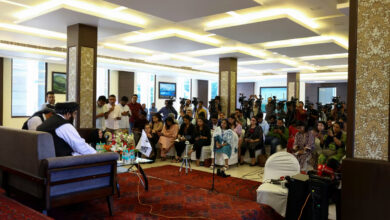Ten years after a series of legal reforms in Egypt’s personal status laws, more is needed according to women rights activists who convened this week for a conference on violence against women.
Law 1 for the year 2000 allowed Egyptian women for the first time to file for a divorce, on the condition that they waive all their financial rights, through what is known as khula. This was followed by a second significant wave of reforms in 2004 whereby a family court system was established and a Family Insurance Fund was founded to allow women to collect court-ordered alimony.
The conference entitled Violence Against Women: A Growing Problem and Verbal Solutions was held by the Egyptian Centre for Women’s Rights (ECWR) on 28 June with the aim of starting a dialogue and addressing misconceptions in the public sphere. The conference pinpointed the relationship between legal reforms and social attitudes.
ECWR charges that the amendments so far are incomplete and that a greater overhaul of the personal status laws is needed to give women the rights they deserve.
A focus of the conference was the media and its role in the debate over women’s rights and the legal amendments. Lawyer and ECWR director Nehad Abul Qomsan argued that since 2000, only “tiny pieces” of the law have been changed, but “they were covered by the media as a huge victory for women which left society with an attitude that they [women] got more than they deserve.” Thus, according to Abul Qomsan, despite the piecemeal nature of the reforms, a public backlash against empowerment of women is in process.
Journalist Nahed el-Manshawi asserted that “the media always sees the women as the cause or gives her the blame in incidents of violence against her; everything is written against the women and for the man. If a man kills his wife they say she must have done something to deserve it, while if a woman kills her husband it is written about with huge sensational headlines.”
A blame-the-victim culture seems to be endemic and emphasized by the media. The issue of sexual harassment is a point in case, a now-much talked about problem that plagues most women who venture into Egypt’s public spaces. A 2009 study conducted under the umbrella of the National Council for Women (NCW) and USAID found that over 80 percent of respondents (men and women) believed that women were harassed because of “the way they dress”, and over 50 percent also cited “the way they walked.”
Gihan Abou Zeid, then-research director of the Combating Violence program that was one of the bodies involved in this study, suggested that this is a crisis than cannot be pinned to any one cause, and is an outcome of broad political and economic problems on both a regional and domestic level. She pointed to unemployment, the need for institutional change and fairer social policies. She explained that women bear the brunt because “females are the weakest in society and so see a lot of violence – children also are seeing more violence because they are more vulnerable.” She coined the term ‘vulnerability-based violence’, whereby those least able to protect themselves will suffer most for all of society’s woes.
Domestic violence is another major manifestation of violence against women. The NCW/USAID study also showed that 63 percent of married women had experienced violence and 78 percent of married men had perpetrated such violence while over 50 percent of unmarried women reported physical violence from a brother or father.
Abul Qomsan addressed the role of popular television drama and the prevalence of scenes of violence against women as evidence for the negative role that the media plays. A 2002 study carried out by the New Woman Foundation, surveyed 18 television series played during Ramadan that year and recorded 559 instances of psychological or physical violence against women. The report also pointed to “an apathy in society when it came to instances of violence, especially those involving men committing violence against women.” It also raised the issue of the way in which violence against women is portrayed, asserting that the perpetrators of such acts of violence are often “the heroes, stars close to the hearts of the audience.”
This study did not suggest that such television dramas are creating an atmosphere of violence against women, but rather that they are a “reflection or translation” of it, and that they play a role in mainstreaming it.
Yet, as per Albert Bandura’s influential Social Learning Theory, television is a source of behaviour modelling. The television set has also become the centre of the home, especially as the number of channels continues to swell. Therefore, it plays a central role in stimulating social trends, besides merely reflecting them.
Accordingly, the problem is not the legal framework alone. Ashgan Abdel-Hamid, country director of Karama, a women’s rights NGO, felt that despite the existence of gender-based discrimination in the legal system, the main problem is the implementation of the laws.
Mulki al-Sharmani, assistant research professor at the Social Research Center of the American University in Cairo, supported this view. Her work suggests that attitudes have not yet caught up with the rights that women have been newly granted in the legal system. Her study on the family courts in Egypt shows that one of the main obstacles facing their mediation mechanism was that “some court personnel and litigants reject the very idea of formal mediation… they argued that it was inappropriate and offensive for couples to recount intimate details of their lives to mediation specialists.”
Changing attitudes overnight and adjusting the legal system to address a multi-layered social issue is a challenge. But Abou Zeid reminds that introducing tougher legislation that will protect women could change behaviour, and from there attitudes will follow.




